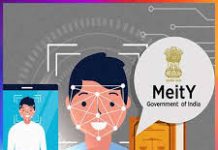“The Internet never sleeps; and the internet never forgets”. This statement appositely describes the presence of Internet in our lives and the characteristics that it portrays. Posting things on the Internet gives access of it to people all around the world in no time. This characteristic of Internet has its own pros and cons. The con being that when certain illegal or offending content is posted on the Internet, by the time it is brought down, already a lot of people have had access to that content. Moreover, since Internet is so wide there are certain technological impediments faced by the responsible authorities to entirely efface such content from the Internet. Recently, a single judge bench of the Delhi High Court in ‘X’ v. Union of India and Ors. while dealing with similar issues passed an order to provide answers as to what would be the implementable and effective directions that could be issued by a Court so as to remove certain content from the world-wide-web found to be illegal or offending and ought to be removed.
Background of the Case
The Petitioner ‘X’ came before the Court with the principal grievance that the photos that she had posted on her “private” Instagram and Facebook accounts were taken without her knowledge or consent and had been unlawfully posted on a pornographic website. The contention of the Petitioner was that even though her photos were otherwise unobjectionable, the petitioner’s photographs became offensive by association and by placing the said photographs on the pornographic website, the respondents had committed the offence of publishing and transmitting material that appeals to the prurient interests of the public, an offence under Section 67 of the Information Technology Act, 2000 (the ‘IT Act’).
The Court passed an order to remove the photographs of the Petitioner from the pornographic website. The respondents were willing to comply with the order of the Court, however, they were unable to entirely remove those photographs as errant parties continued to re-post and re-direct those photographs from one online platform to another. Moreover, Cyber Prevention Awareness and Detection Unit, a specialized cybercrime unit of the Delhi Police, submitted before the Court that although the Unit was willing to comply with the directions of the Court, due to technological impediments, it could not assure the Court that it could entirely efface the content from the world-wide-web. In this backdrop the Court framed certain queries to get answers as to what would be implementable and effective directions that a Court should issue if it finds certain illegal or offending content on the world-wide-web and that content is ought to be removed. Thus, the Court while resolving the queries formed certain ‘template directions’ that a Court should issue if it finds certain illegal or offending content.
Queries Framed
- When a party seeks relief from the Court in order to remove the offending content from the world-wide-web, what directions should the Court pass to make its order implementable and effective; and to which parties such order to be issued;
- What steps should the law enforcement agencies take so that the offending content does not resurface on the world-wide-web.
Template Directions issued by the Court
To address the above-mentioned queries, the Court needed to examine the current statutory landscape of our country, the technological limitations and impediments faced and also how such matters are addressed in other jurisdictions. Therefore, the Court appointed Amicus Curiae to assist it in the matter. On considering the submissions made by the learned Amicus Curiae and analyzing the overall application of the current legal aspects regarding unlawful online content, the Court concluded that with the recent enactment of the Information Technology (Intermediary Guidelines and Digital Media Ethics Code) Rules, 2021 (‘2021 Rules’), the earlier Intermediary Rules, 2011 have been suppressed. Consequently, the Central government has sharpened and expanded various aspects of the liabilities and obligations that intermediaries have to deal with unlawful content.
Further the Court issued certain template directions which would be implementable, effective and would enable meaningful compliance of the orders of the Court. The set of directions included:
- When a “grievance” is brought before a Court and the Court is satisfied that such grievance requires immediate redressal, the Court may issue a direction to the said website or online platform hosting the offending content to remove such content. The website or online platform has to comply with such direction within 24 hours of the receipt of such direction as provided under Rule 3(2)(b) of the 2021 Rules.
- The website or online platform on which the offending content is hosted should preserve all information and associated records in relation to the offending content for at least 180 days or more, as may be required by the Court as mandated under Rule 3(1)(g) of the 2021 Rules.
- If the Court finds it appropriate, it should also issue a direction to the search engine(s) to make the offending content non-searchable by de-indexing and de-referencing the offending content in their listed search results.
- The Court must also direct the concerned intermediaries to endeavour to employ pro-active monitoring by using automated tools and identify and remove or disable access to any content which is exactly identical to the offending content. This has to be done in furtherance of Rule 4(1)(d) of the 2021 Rules.
- Further, the Court should direct the concerned law enforcement agencies to collect all information and associated records from the concerned website or online platform within seventy-two hours of receipt of written intimation by the law enforcement agency. This has to be done in consonance with Rule 3(1)(j) of the 2021 Rules.
- The Court must direct the aggrieved party to furnish all the available information that identifies the offending content in his/her possession to the law enforcement agency. Further, the law enforcement agency, on being directed by the Court can furnish such information to the concerned website or online platform.
- The Court should permit the aggrieved party to notify the law enforcement agency to remove the offending content from any other website or online platform on which the same or similar offending content is found to be appearing. The law enforcement agency shall then notify the concerned website or online platform who would be obligated to comply with such request. In case of any technological impediment or objection faced by the website or online platform, it can approach the Court for clarification but only after first complying with the request made by the aggrieved party.
- The Court may also direct the aggrieved party to make a complaint on the National Cyber-Crime Reporting Portal.
- The Court must refer to the provisions of Section 79(3)(a) and (b) read with Section 85 of the IT Act and Rule 7 of the 2021 Rules. The abovementioned sections and rule make it amply clear in which cases an intermediary would forfeit its exemption from liability. For instance, an intermediary fails its obligation to remove the offending content, it would forfeit its exemption from liability as per Rule 7.
Problems with these Directions
The Court in accordance with Rule 4(1)(d) of the 2021 Rules directed the search engines like Google etc. to endeavour to employ pro-active monitoring by using automated tools and identify and remove or disable access to any content which is exactly identical to the offending content. Rule 4 of the 2021 Rules is to be applicable only on “significant social media intermediaries” (‘SSMI’). Thus by giving this direction the Court has inadvertently brought search engines under the definition of ‘significant social media intermediaries’. There is no doubt that a search engine is an intermediary according to its definition provided under Section 2(w) of the IT Act. However, in the opinion of the author it is not correct to consider a search engine as a “significant social media intermediary”. According to Rule 2(1)(v) of the 2021 Rules, SSMI means a social media intermediary having number of registered users in India above the threshold as notified by the Government of India. From this definition two things have to be identified. First, that a search engine is a social media intermediary and second, that it has number of registered users above the threshold.
First, it has to be considered that whether a search engine will come under the ambit of social media intermediary. According to Rule 2(1)(w) of the 2021 Rules, a social media intermediary is an intermediary whose primary aim is to enable interaction between two or more users and allows them to share create upload, disseminate or access information using its services. There are various search engines available, however since Google has over 86% of the market share among all the search engines, illustration of Google will be appropriate. Google does not have the primary aim to enable interaction between two or more users. It merely allows access to information and it does that by allowing its users to search on its website and google itself displays the results of the search. Thus, it cannot be said to be a social media intermediary. Since it is not a social media intermediary, it is not important to scrutinize the second condition. Also, it cannot fall under the ambit of SSMI as the conditions mentioned above are not fulfilled.
The Court in direction (vii) mentioned above said that in case of any technological impediment or objection faced by the website or online platform, it can approach the Court for clarification but only after first complying with the request made by the aggrieved party. The Court has rightly said that in case of any objection, it can approach the Court for clarification but only after first complying with the request made by the aggrieved party to remove certain content because it has been contemplated in Rule 4(8)(b) of the 2021 Rules that the user can request for the reinstatement of the content that has been removed. However, the Court disregarded the fact that this rule is to be applied only on SSMI. Moreover, in this direction the Court has also said that in case of any technological impediments, the website or online platform can approach the Court for clarification but only after first complying with the request made by the aggrieved party. It is pertinent here to note that if a website or online platform is facing certain technological limitations in removing the content, how can it approach the Court only after complying the request of the aggrieved party.
Conclusion
The Court in this case concluded that the Central government has sharpened and expanded various aspects of the liabilities and obligations that intermediaries have to deal with unlawful content. The Court through its directions shed some light on the recently enacted 2021 Rules and how they can be adopted to overcome the barriers in removing the unlawful content from the world-wide-web. However, with its direction, certain issues have been raised, that whether a search engine can be called as a ‘social media intermediary’? Interestingly, Google has recently filed an appeal against this decision before the Delhi High Court pleading that they cannot be called a ‘social media intermediary’. Thus, it has to be seen what shall be the answer to this question.
Image source: here

















